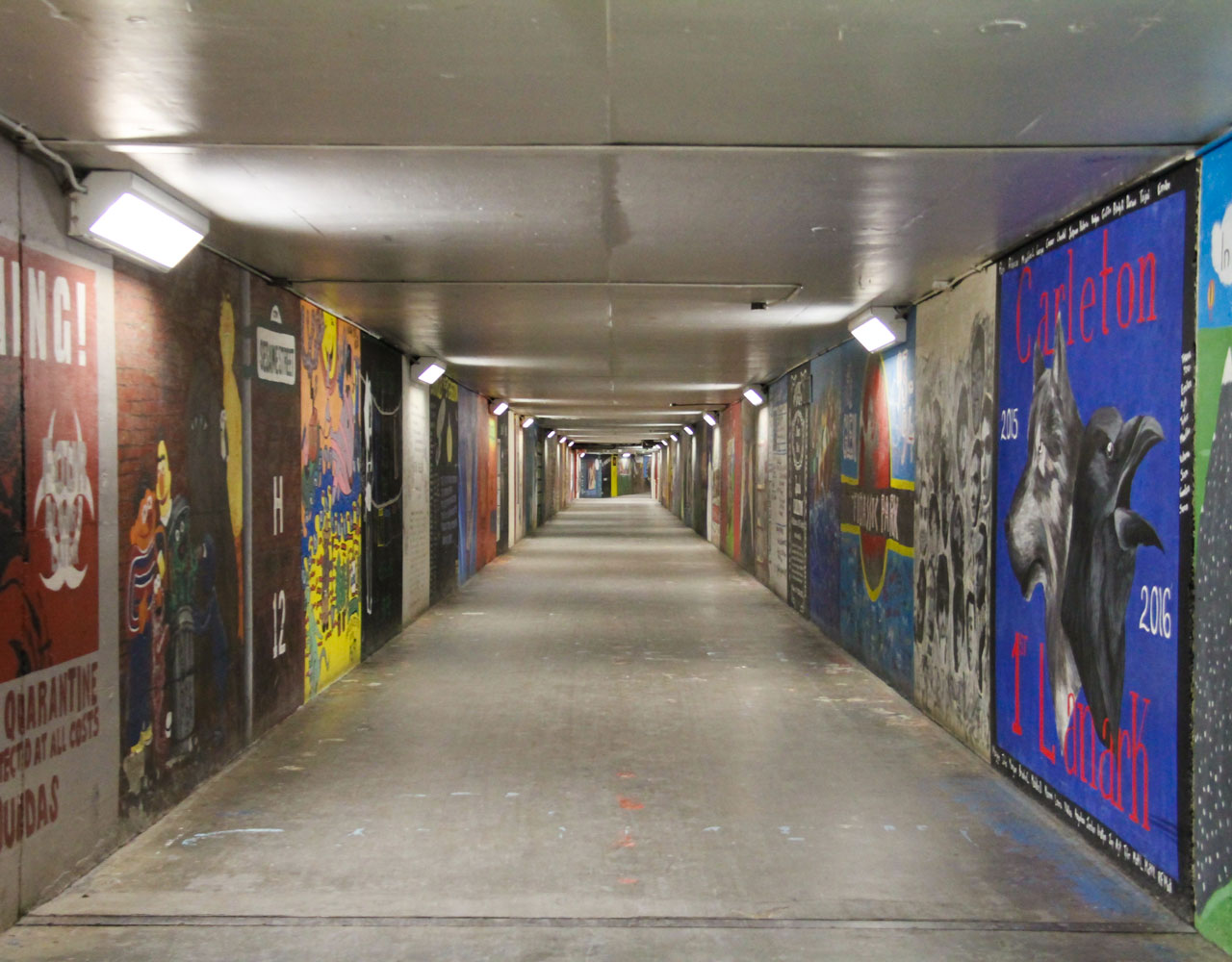A project to replace all exterior and tunnel lighting on campus with new, energy-efficient LED lights is nearly complete.
According to Trevor Stewart, the director of Capital Renewal and Construction at Carleton, the project was launched in September 2017, following a proposal in the spring to start several green projects on campus.
“We put a proposal to obtain funds to support energy enhancements on campus. This is part of that, and we’ve received full funding to invest in energy saving,” he said.
He explained that KE Electrical Services was contracted by the university to install a total of 1,200 LED light fixtures within the specified designations—a task which Stewart said is now about 80 per cent complete. The project, financed by the University’s Strategic Infrastructure Fund, is projected at $1.6 million.
Stewart explained that the advantage of using LED lights is that these types of bulbs radiate light only, as opposed to traditional light bulbs —such as incandescent bulbs—which emit both heat and light. In other words, LED lights provide more light and use less energy.
In addition to being more environmentally-friendly, Stewart estimates that over time, these changes will save the university a significant amount of money.
“The energy savings realized at Carleton will be equivalent to the energy consumed by 93 houses annually, or the energy used by 24,000 feet of commercial space annually,” he said. “If we were to actually shut down the MacOdrum Library for three months completely, that would be the amount of energy that we’re saving on an annual basis.”
When asked whether this initiative was worth its million-dollar budget, Janet Shaw, a third-year civil engineering student and member of the Carleton Chapter of the Canadian Society for Civil Engineering, said she agrees with the project.
“It is going towards a better, greener environment, which I think everyone is trying to get on track with, and while that can be expensive, I think it’s good that everyone’s trying to do it,” she said.
Stewart said the project has been long-expected and represents a positive step for the university toward more efficient, environmentally-friendly practices.
“Our long-term goal is to demand less energy as much as possible,” he said. “I think that this is a very positive initiative that has been required for many, many years. It’s nice to finally get around to doing it.”
Photo by Meagan Casalino






